Thomas' father, former NHL player Steve Thomas, is the player development coordinator for the Lightning, so it will be an interesting afternoon for Thomas who has collected five goals and nine assists (14 points) in 23 games in the AHL this season.

Thomas' father, former NHL player Steve Thomas, is the player development coordinator for the Lightning, so it will be an interesting afternoon for Thomas who has collected five goals and nine assists (14 points) in 23 games in the AHL this season.

Schroeder recorded one assist in two games with Utica this weekend. With the Canucks really thin up the middle right now, Schroeder could slot in on the top-6 tonight.
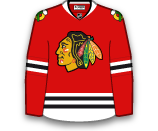
Alex Tanguay will draw back into the lineup after resting on Saturday. Parenteau has recorded two assists with a plus-2 rating since returning from his knee injury last Tuesday.

Sedin was bumped from the top-line in practice today. With his brother out of the lineup, Daniel found himself alongside Zac Dalpe and Zack Kassian on the second line. Henrik and Daniel should be reunited soon, but while Henrik is out, Daniel's fantasy stock takes a hit.

Head coach Bruce Boudreau continues to shuffle wingers in and out of his lineup as the Olympic break approaches. Silfverberg has produced recently, but lacks consistency. He has 15 points (6G / 9A) in 27 games this season and will likely slot back into the lineup on Saturday at Dodgers Stadium.

Stanton rejoined the team at practice on Monday after being out since December 17 with an ankle injury. He was enjoying a lot of success in Vancouver after being claimed off waivers from Chicago earlier in the year. Entering play tonight he has 11 points (1G / 10A) in 36 games.

Klein was acquired by the Rangers when they traded Michael Del Zotto on Wednesday. Klein has just three points (1G / 2A) with a minus-11 rating in 47 games with the Predators. He has a career-high of 21 points in 2011-12 and is known more for his defence than his offence. Moving to New York will not improve or decrease his already very minimal fantasy value.

Varone was recalled on Wednesday and will play in his first NHL game tonight vs. Carolina. He had 33 points (8G / 25A) in 38 games with Rochester (AHL) before being recalled.
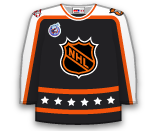
Diaz has yet to record a goal in 46 games this season and has just one assist and a minus-5 rating in his last 16 games.
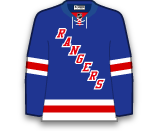
Emelin was a minus-2 on Saturday vs. the Maple Leafs and has just two assists, a minus-7 rating with 35 hits and 16 blocked shots in his last 10 games.

Kindl has just one assist with a minus-1 rating in his last 10 games. With Kindl coming out that likely means Danny DeKeyser moves to the top power-play alongside Niklas Kronwall, while Brendan Smith slides onto the the second unit.
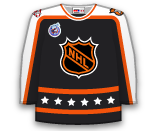
“Val is going back in,” Lindy Ruff said. “This was to recharge Val and get him going again. It’s hard, because we miss him when he’s out of the lineup, we miss the Val that had lots of energy and skated well. It’s hard to say an 18-year-old is a big part of our team, but he’s a big part of our team, and when he’s going well, we’re a better team.” Those are pretty complimentary words for Nichushkin, who has 22 points (9G / 13A) in 46 games. There is no word on how the Stars lines will shake out, but we guess that coach Ruff goes back to his old lines, which will see Nichushkin skating with Tyler Seguin and Jamie Benn.

Tatar will play vs. the Kings tomorrow after missing Thursday's game to attend his father's funeral in Slovakia. Tatar will likely replace Mikael Samuelsson.

Palmieri was a healthy scratch on Wednesday but will draw back into the lineup tonight in Chicago. He has recorded 19 points (8G / 11A) in 43 games this season.

Downie has been a healthy scratch for the last two games, but may return tonight. Head coach Craig Berube reiterated that he needs more intensity from Downie.
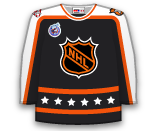
With Brian Gibbons out for at least one week the Penguins had to move someone to Crosby's line, which we now know is Sutter. Sutter certainly gets a boost in fantasy value for the foreseeable future, he has 16 points (8G / 8A) in 47 games this season.
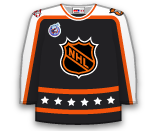
Blues head coach Ken Hitchcock said that Ian Cole has earned the right to stay in the lineup, so he has elected to scratch Leopold instead. Leopold has three assists and a plus-2 rating in four games since returning from a hand injury.
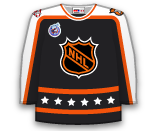
Dalpe has averaged only 6:22 TOI in 29 games this year, but played a season-high 14:15 in Friday's game vs. St. Louis. He scored his second goal of the season in that game, he now has four points (2G / 2A) on the season. He could be an interesting, cheap option in one-day leagues, but likely doesn't have any legitimate value in standard leagues.

Downie will be a healthy scratch tonight vs. the Rangers, after head coach Craig Berube said that his effort level shift-to-shift needs to be higher. Downie has not recorded a point in his last 10 games and is a minus-4 over that span. Tye McGinn will move to the third line, like he did in the third period on Saturday and Rosehill will slot in on the fourth line.

Silfverberg was a healthy scratch on Thursday, but will be in the lineup tonight vs. the Coyotes. Head coach Bruce Boudreau continues to shuffle players in and out of the lineup. Silfverberg has registered three assists and a plus-2 in his last four games and has totalled 11 points (5G / 6A) in 21 games.
